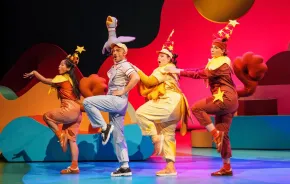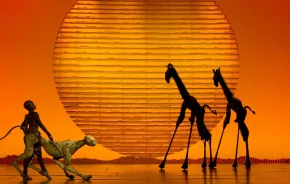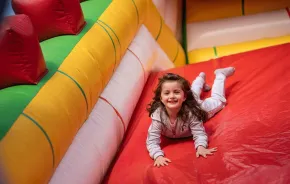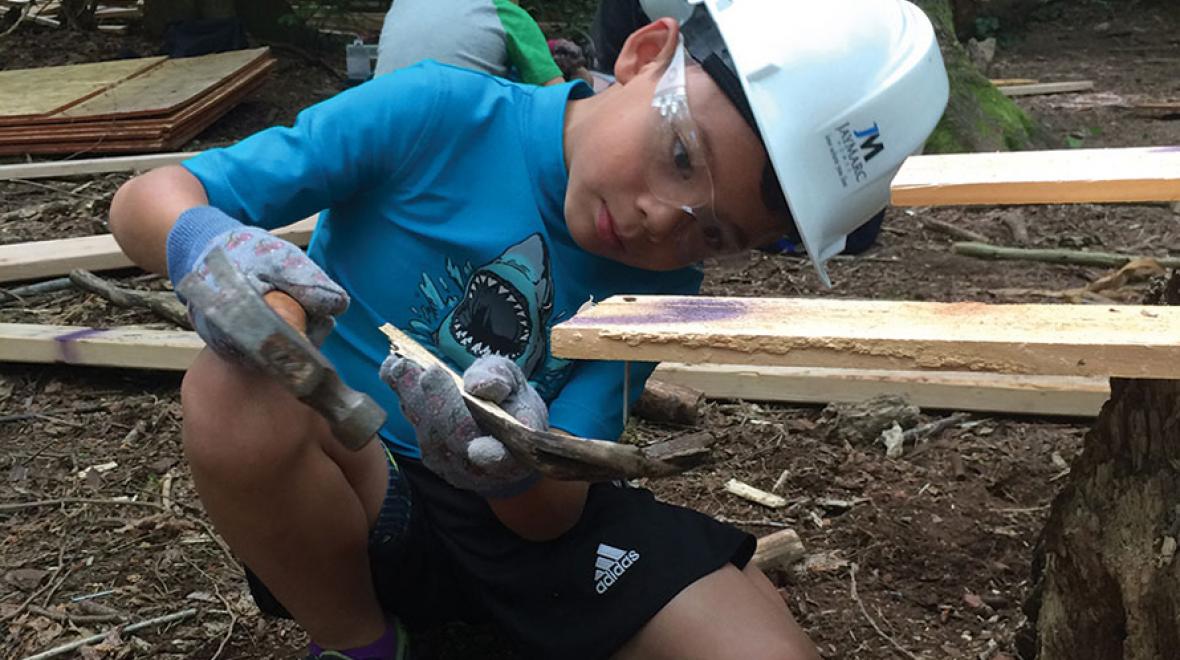
Photo:
Kids can work on the same fort all summer long at Mercer Island's Adventure Playground. Photo credit: City of Mercer Island
In 2014, The Atlantic published an article about a play zone in North Wales called The Land, and by doing so, shared the concept of European “adventure playgrounds” with mainstream American audiences for, arguably, the first time.
Keep playing
Learn how to build your own "playborhood" in part one and read up on the right age to let kids go free range in part three of our July print feature.
Adventure playgrounds sprang up in urban, post–World War II Europe as spaces for kids to build with real tools, play freely and even light fires with minimal adult supervision. Instead of fixed equipment, loose building materials — from old tires to wood and rope — are on hand as fodder for kids’ creative visions. Often, the parents stay out, while trained “playworkers” facilitate but never interfere. The Atlantic article and accompanying video on The Land was a visceral reminder of how U.S. playground design, in contrast, had long prioritized safety over adventure.
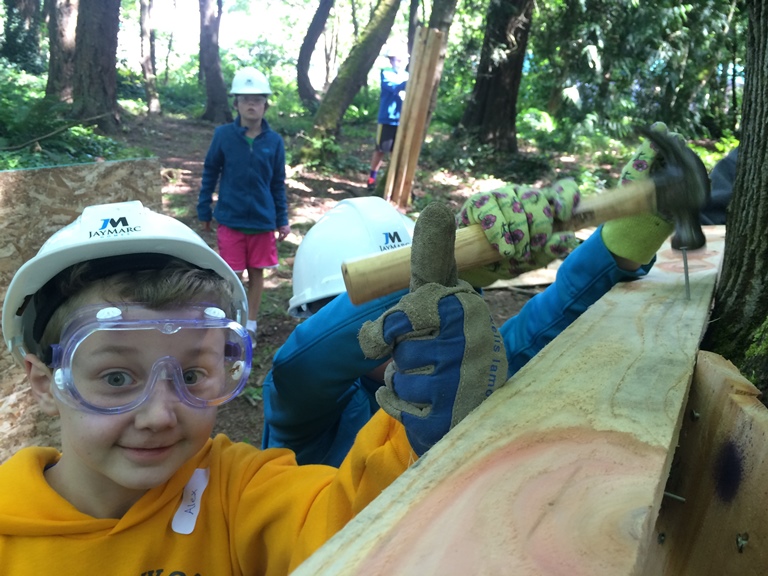
But change is afoot. In 2010, the City of Mercer Island, inspired both by European adventure playgrounds and Richard Louv’s book Last Child in the Woods, opened its own “adventure playground” in a wooded acre at Deane’s Children’s Park, where hard-hat-wearing kids ages 4 and older use real tools and scrap wood to build forts. Now in its seventh year, the program runs three afternoons a week from late June through late August (with a more limited schedule in September). It’s extremely popular.
Even better, says Diane Mortenson, recreation superintendent for Mercer Island Parks, “The forts are all up all summer, so kids can come week after week to add on to their existing structures.” Some parents have safety concerns (parks staff check toolboxes out to kids, but don’t actively supervise; parents must accompany kids 12 and under) — but the injury data is impressive: In eight years, Mortenson says, they’ve only had a few nails in shoes and one broken arm.
Despite the Mercer Island program’s popularity — it’s been written up in books about play and been studied by other cities — it remains unique to the Puget Sound area.
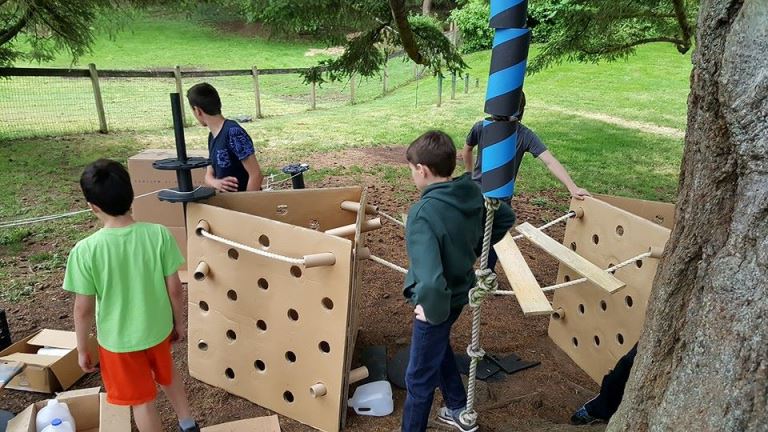
But perhaps not for long. On Bainbridge Island, an industrial designer and artist named Kevin Mills is exploring the idea of creating an industrial-themed play zone on an acre of land not far from Winslow. Mills’ background is in designing exhibits for the Children’s Museum Tucson, in Arizona; in his work, he was struck by the difference in how kids played with big, loose parts such as Imagination Playground blocks versus how they played with traditionally designed exhibits that had more of a built-in narrative.
“We couldn’t deny the change of behavior we saw in the kids,” Mills says. “They took a deep breath and geared down dramatically, lost themselves in this carefree, child-directed free play.”
Kids can come week after week to add on to their existing structures.
When he heard about growing interest in European adventure playgrounds in the U.S., he wanted in, and he saw Bainbridge Island, populated by artisans and nature-loving families, as an ideal locale. In a studio, Mills is using reclaimed materials such as cardboard and tires to design play-friendly prototypes, which he’s been testing at “pop-up” playdates, where he puts out the materials and lets the kids have at it.
“Ninety-nine percent of the kids instinctively took to the stuff knowing what to do,” he says.
Mills’ project, which he describes as “one part sculpture garden, one part junk playground,” has a long road ahead, including clearing the land, getting funding and hiring playworkers. He also hopes that adventure playgrounds will eventually be part of a cycle through which manufacturers can pass on play-friendly scrap materials, with some modifications, for children’s play.
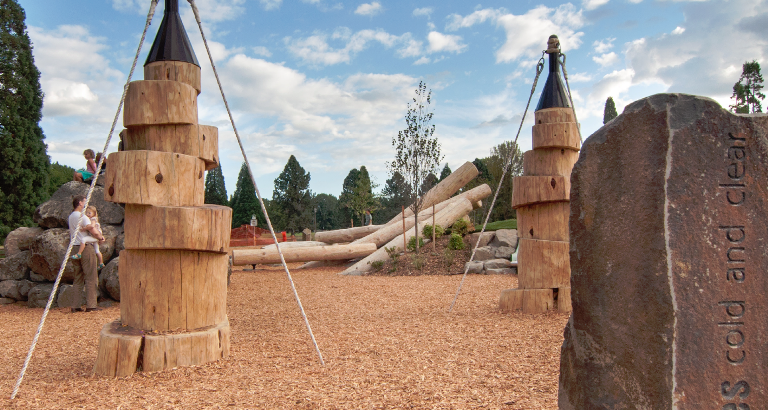
“My vision is to eventually get the maker movement and the adventure playground movement to get to know each other,” he says.
Meanwhile, there are signs that local playground design is becoming more adventurous, too. In just the past three years, new play spaces such as Seattle Center’s Artists at Play playground, Miner’s Corner park in Bothell and the new KidsQuest Children’s Museum in Bellevue have included features intended to promote “safe risk” and open-ended play.
And definitely mark this on your summer calendar: An exhibit at Seattle’s Center for Architecture and Design titled Extraordinary Playscapes documents 10 of the most exciting play spaces locally and internationally. It opens July 13.
Find out more
|








